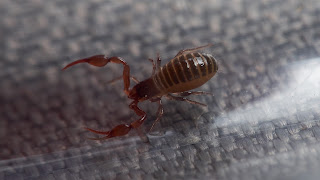Sue, a regular member of our group last year, has now taken up a position at Lake Vyrnwy RSPB Reserve and she invited us to visit her at the reserve. We were very happy to accept.
We met in the car park close to the dam head and RSPB's Visitor Centre. After a joyful reunion we started our visit in the bird hide where our host has the early morning task of filling up the feeders.
A good number of birds were taking advantage of her largesse including a good number of siskins, a bird I had not seen for quite some time. They used to be regular visitors to our garden in the winter but have long since gone elsewhere.
 |
| Photograph: David Williams |
Competing for the food with the siskins were chaffinches, various tits, nuthatches and probably others that I cannot recall. Underneath the feeders pheasants were picking up the scraps. A great spotted woodpecker was investigating nearby trees and a couple of squirrels were scurrying around but not attempting to get to the feeders.
 |
| Photograph: Peter Hodgkinson |
We could have stayed there all day but we were also keen to see other areas of the site. Our host had arranged for us to look at a couple of fields that the RSPB planning to turn into wildflower meadows.
As the fields were a fair way around the western edge of the lake we used cars to get us and our equipment to the sites.
The first field had been grazed by sheep. These had been removed but their presence was very evident in the short sward and droppings. I believe the plan is to see what happens if the field is left to develop naturally rather than seed it.
A brief pause to take in the view of the lake and its distinctive pump house.
 |
| Photograph: Margaret Mitchell |
A hawthorn in the field attracted our attention as it was laden with lichens.
Usnea this and Usnea that declared our lichenologist who was very impressed by the variety and abundance on show. The following picture is of some Usnea florida that was found on the ground (not taken from the tree).
At this point our lichenologist turned drone pilot as he bought out his latest gadget (with permission I must add).
Lift off.
 |
| The drone is in the top right hand corner - Photograph: Peter Hodgkinson |
The drone has a camera which records a video of the flight and it is possible to capture pictures from this. Here are a couple of views of the lake that you will not see unless up in the air.
 |
| Photograph: Bob Kemp |
 |
| Photograph: Bob Kemp |
To bring us down to earth here is a more conventional view from ground level, albeit up the slope at the top of the field.
 |
| Photograph: David Williams |
And also to bring us down to earth what did we find? Unfortunately the answer is very little - a few spiders, a springtail or two, a couple of woodlice and a millipede. Still, better than nothing. And it is not a good time of the year for finding wee beasties. (Well that's our excuse!)
Lunch beckoned. Rather than picnic in the field we made our way to the top of the lake and the Centenary Hide. This commanded a view over what looked like an isolated pool as it was surrounded by trees with a pleasant backdrop provided by the surrounding hills.
 |
| Photograph: David Williams |
Whilst we lunched we kept an eye out for birds. There were not many about but we did spot a chiffchaff, robin, long-tailed tits, goldcrest and a little grebe. Every now and then the water would ripple as a fish swam near the surface.
After lunch we made our way to the second site. The grass in this field was longer, not eaten to the ground by sheep, but there was a pony on it. It came to greet us when we arrived but quickly lost interest and was indifferent to our activities.
One of the group picked up a moss covered log from a log pile and exclaimed "PSEUDOSCORPION".
This caused tremendous excitement (had we never seen one before?) and some of us crowded round to look and marvel how the finder had managed to spot a brown 2mm long insect in a forest of moss.
 |
| Photgraph: Peter Hodgkinson |
A tiny froghopper was also found. This caused no excitement other than to myself. I later identified it as a female Delphacodes venosus.
As the grass and other vegetation were lusher here I was hopeful that we would find more and, employing "moth-vac" we did. Four more pseudoscorpions (never before had we found so many) and a couple more Delphacodes venosus. To be fair the pseudoscorpions are cute, especially their ability to sprint backwards when threatened. We believed that all four were the same species and one was later identified as Neobisium carcinoides.
 |
| Both photographs: David Williams |
After all this excitement we needed refreshments. We returned to the tea room for a well deserved cup of tea/coffee/chocolate before making for our homes.
On the way home, in the absence of a Welsh speaker, we decided that Vyrnwy must mean "Valley of the Pseudoscorpions"!
My thanks to Sue for arranging the visit and to the RSPB for permission to do what we do. My thanks also to the photographers for supplying so many excellent photographs - sorry that I could not include them all.
And finally! One more shot from the air.
 |
| Photograph: Bob Kemp |































No comments:
Post a Comment
Please feel free to comment on this post...